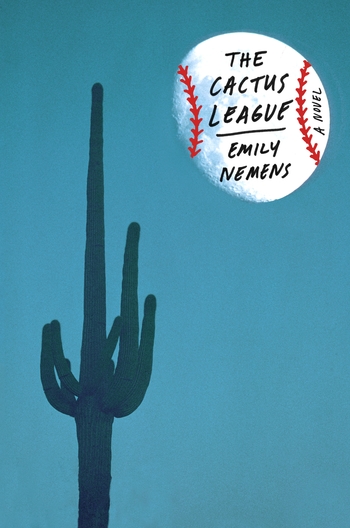This collection gathers 16 of my stories from the 25 years
(25 years?!) since my first mystery
appeared in Ellery Queen’s Mystery
Magazine—though really you’d have to cut that quarter-century nearly in
half to calculate my output, since it took about 12 years from my first appearance
in EQMM (“Murder on the Orient
Express” in 1995) to my second (“An
Internal Complaint” in 2007). The title story is my most recent publication—in the
January/February 2020 issue of Alfred
Hitchcock’s Mystery Magazine—and the rest of the collection includes short
stories that have won honors including the Edgar Award, the Anthony Award, and
several Agatha, Derringer, and Macavity Awards. I’ve been very fortunate with
the attention readers have given my short fiction.
Which story did you
most enjoy writing? Why? And, which story gave you the most trouble, and why?
The opening story in the collection, “Mastering the Art of
French Cooking,” is possibly the quickest I’ve ever written a story—and oddly,
possibly the one that people talk most about. Roxane Gay championed the story, which
is structured as a recipe, and I’ve heard it’s been taught in creative writing
workshops. I came up with the idea while my mind wandered during a Chicago
concert my wife, Tara Laskowski, dragged me to. The next morning, I woke up,
wrote the first draft quickly, showed it to Tara, revised it, submitted it
before noon, and had an acceptance from PANK
early afternoon.
That’s an anomaly for me—to say the least.
More like my pace: I wrote the first draft of “The Boy
Detective & The Summer of ’74” in the early 1990s, and it finally appeared
in print more than 25 years later—in the most recent issue of AHMM, as I said above. The first draft
was 3,500 words, the final nearly 12,000, and in between it became one strand
of a failed novel, reemerged as a novella of about 18,000 words, and… well,
there were a lot of years spent putting that one aside, coming back to it,
expanding, condensing, tinkering, tinkering, tinkering.
Tell us a bit about
the highs and lows of your book’s road to publication.
I’ve been very fortunate in this regard too. My publisher,
Crippen & Landru, specializes in high quality volumes of short mystery
fiction—both by classic authors and by contemporary voices. I’ve long admired
the publishers, long dreamed of having my own work in their series; and I was
honored when I heard that they’d been following my own career and thinking the
same thing. Everything just came together.
What’s your favorite
piece of writing advice?
It may be clichéd at this point, but Anne Lamott’s “Bird by
Bird” continues to resonate. I’m an extremely slow writer, but somehow, if you
keep at it, you can get where you’re going.
My favorite writing
advice is “write until something surprises you.” What surprised you in the
writing of this book?
Maybe because I’m a slow writer, partial drafts have
sometimes languished for a long stretches before I’ve figured out where a story
is going. I submitted the first half of “A Voice from the Past” to some
workshop readers—it’s a story which revisits the legacy of hazing at a boys
boarding school—and they responded with, “This is great!” and “What’s going to
happen next?” And I had to tell them that I really didn’t know—didn’t know to
the point that I finally put the draft aside. For nearly five years. When I came
back and reread it, suddenly I saw the possibilities lurking in the small
details I wasn’t entirely aware I’d folded in—what one character might have been
doing, the extremes another character might go to, and how those extremes were
rooted in the past. I often tell my writing students that they have to listen
to their own work—to what their unconscious might be doing—to figure out what a
story is really about, what to do with it. Often I think the best stories come
out that way.
What’s something
about your book that you want readers to know?
I want to give a shout-out to Luke Buchanan, a North
Carolina artist who created an original work in response to the title story—the
painting now on the cover of the collection. Luke incorporated several specific
elements of “The Boy Detective” into his collage here, and the whole image
captures so much that mix of nostalgia and melancholy and uneasiness that I associate
with the story myself—and with much of my own work generally.
Inquiring foodies and
hungry book clubs want to know: Any food/s associated with your book? (Any
recipes I might share?)
I didn’t realize it until I read through the collection at
proof stage, but many of my stories feature cocktails! …and they’re
occasionally pertinent to the plot, as with the gimlet in “The Odds Are Against
Us.” Here’s that recipe:
Gimlet (borrowed
from The PDT Cocktail Book)
2 oz. Plymouth gin (Art’s note: Plymouth
makes a considerable difference here)
.75 oz. lime cordial (see below)
.75 oz. lime juice
Shake vigorously with ice.
Strain into a chilled coupe
glass.
Lime
Cordial (downsized proportionally from
the PDT recipe to avoid straining your zesting hand)
4 limes
8 oz. simple syrup
Zest limes, and combine zest with
simple syrup.
After 10 minutes, fine strain
into a container and chill.
Bonus recipe: You can actually make the recipe for coq au
vin in “Mastering the Art of French Cooking” (linked below), but please take
care to leave out the arsenic.
[Editor’s note: I love The
PDT Cocktail Book and we’ve made these gimlets many, many times!]
*****
READ MORE ABOUT THIS AUTHOR:
www.arttaylorwriter.com
READ MORE ABOUT THIS PUBLISHER:
www.crippenlandru.com
ORDER THIS BOOK FOR
YOUR OWN TBR STACK: www.crippenlandru.com
READ A STORY, “Mastering
the Art of French Cooking”: https://pankmagazine.com/piece/mastering-the-art-of-french-cooking/


